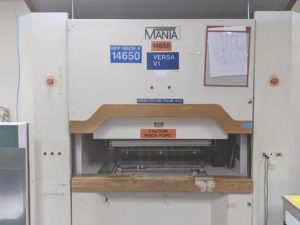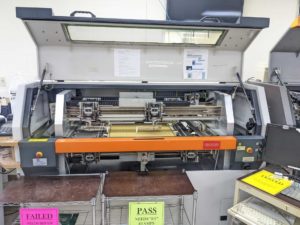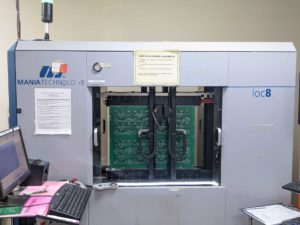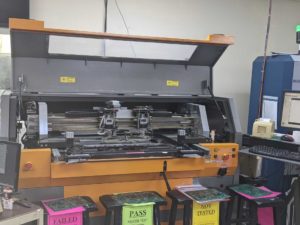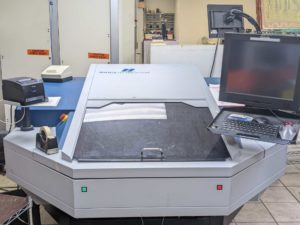PCB testing techniques play a significant role in SMG’s low return rates, which are below 1%. Of the many PCB testing methods available, here are the ones that are essential to know.
Circuit Board Testing: In-Circuit Testing
In-circuit testing, or ICT, is one of the most valuable types of circuit board testing. In-circuit testing works by inserting pins into an epoxy phenolic glass cloth laminated sheet. These pins make contact with the printed circuit board while also being connected to a measuring unit. In-circuit testing provides an impressive coverage range and eliminates human error in a way that other tests do not.
During in-circuit testing, trained and certified SMG manufacturing personnel are responsible for the quality of each testing procedure. Each operator ensures that the product produced at their respective operation is suitable to pass on to the next operation. If not, the area supervisors are involved to determine disposition with the quality department making the final decision.
Circuit Board Testing: Fly Probe Testing
Fly probe testing is the other primary circuit board testing process used in our industry. This test can be performed in panel form, or after the final machining operation. Fly probe testing must be completed before the final inspection takes place. Customers opt to use this testing process when they need to verify that the circuitry on the printed circuit boards is free from all open or short circuitry. This type of testing is done by four moving probes that move from net to net, testing one net at a time.
Flying Probe Testing is unique because it is only performed on products specified by the customer or as required by SMG-Global management. To ensure proper fly probe testing procedures and to keep track of all important data, SMG’s testers are required to sign and date the Manufacturing Traveler upon successful completion of the testing performed.
Circuit Board Testing: Quality Assurance Procedures
Many processes factor into SMG’s overall high-quality manufacturing performance in addition to circuit board testing. For example, SMG is proud to uphold stringent quality assurance system standards, regularly using internal quality audits and calibration and preventive maintenance programs for our equipment.
Quality Assurance for Circuit Board Projects: AXI
X-ray inspection, or AXI, is one of the core quality assurance methods for printed circuit boards. SMG uses x-ray technology to inspect everything from solder connections to internal traces and barrels.
With the advantage of x-ray at their disposal, our circuit board testers can verify the internal integrity of PCBs without dismantling the project. While x-ray inspection effectively works similarly to simple visual inspections, this fundamental difference of providing accessibility to the interior of printed circuit boards is significantly helpful to circuit board testers.
Quality Assurance for Circuit Board Projects: AOI
Another integral quality assurance process carried out by circuit board testers is automated optical inspection, or AOI. If a board fails to match the design at any point, it is marked to be inspected by one of the circuit board testing personnel.
The benefit of AOI is that this process detects PCB failures and flaws early on in the manufacturing process. Additionally, since AOI is an automated process, it can be implemented easily during each production stage, saving time and effort.
Circuit Board Testing and More!
In addition to in-circuit testing, fly probe testing, and quality assurance processes, SMG employs various verification techniques for our circuit board projects, such as solderability tests, PCB contamination testing, Micro-sectioning analysis, Peel tests, and more. These circuit board processes play a major role in SMG’s low return rates by guaranteeing high quality end products every single time.

